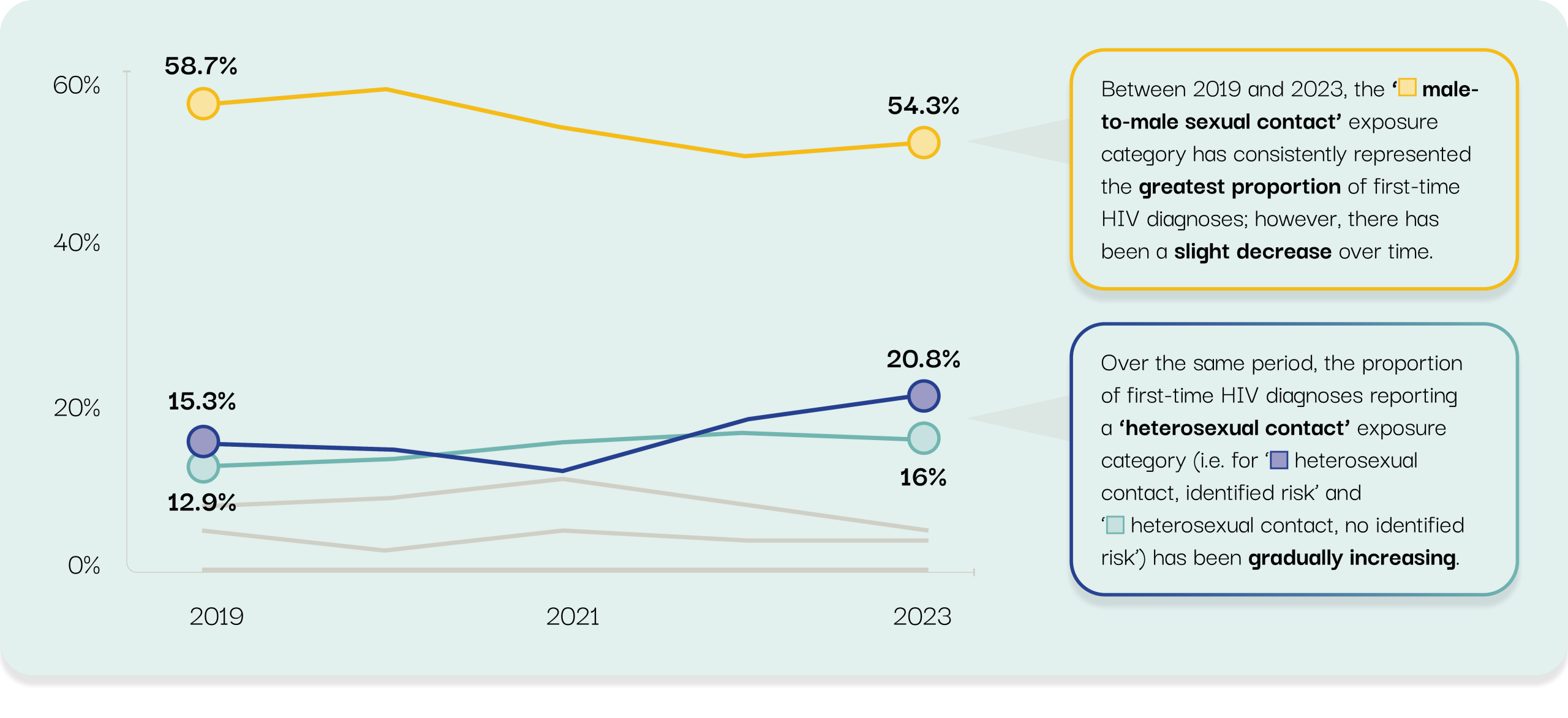Trends from the 2023 HIV Diagnoses Report
OHESI produces regular blog posts and reports to analyze patterns in HIV testing, diagnoses and the HIV care cascade. Scroll down for current trends on key indicators. Check out our data blog and reports for in depth analyses.
There were 938 first-time HIV diagnoses in 2023. After the HIV Look Back Project, with additional information on previous test history, the number of first-time diagnoses in Ontario in 2023 decreased to 723 (a 23% decrease).
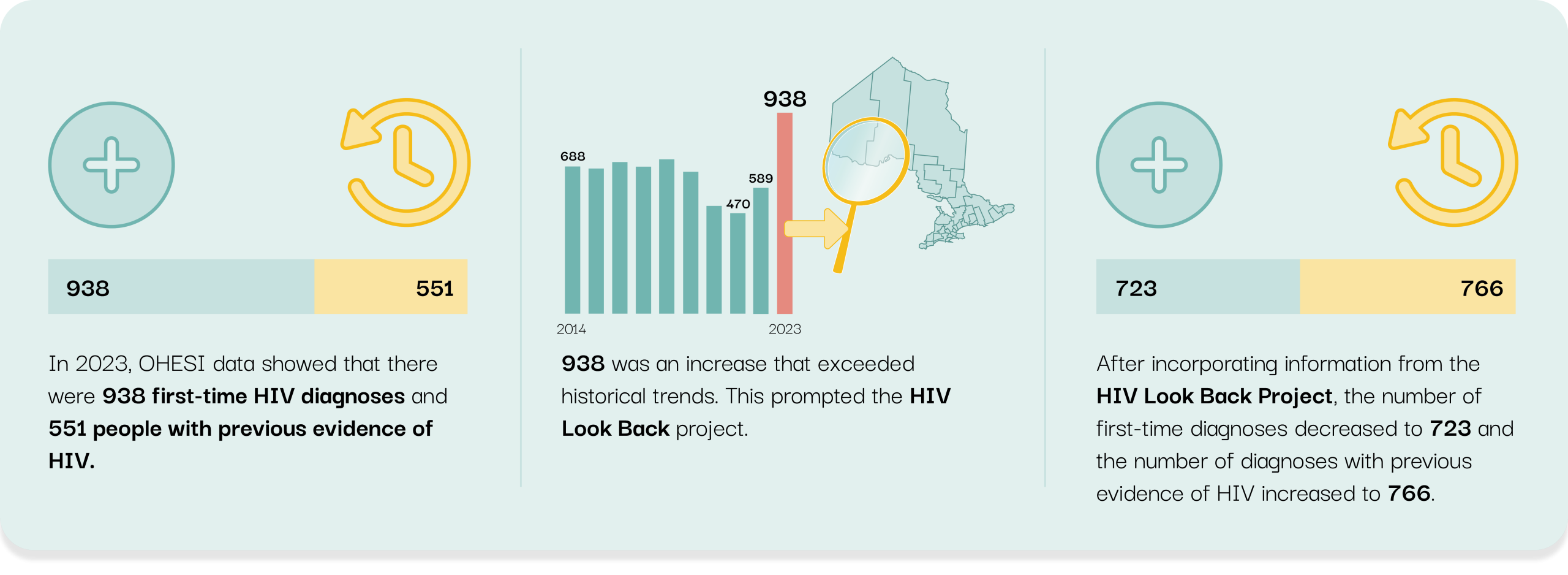
Males represent the highest proportion of first-time HIV diagnosis compared to females.
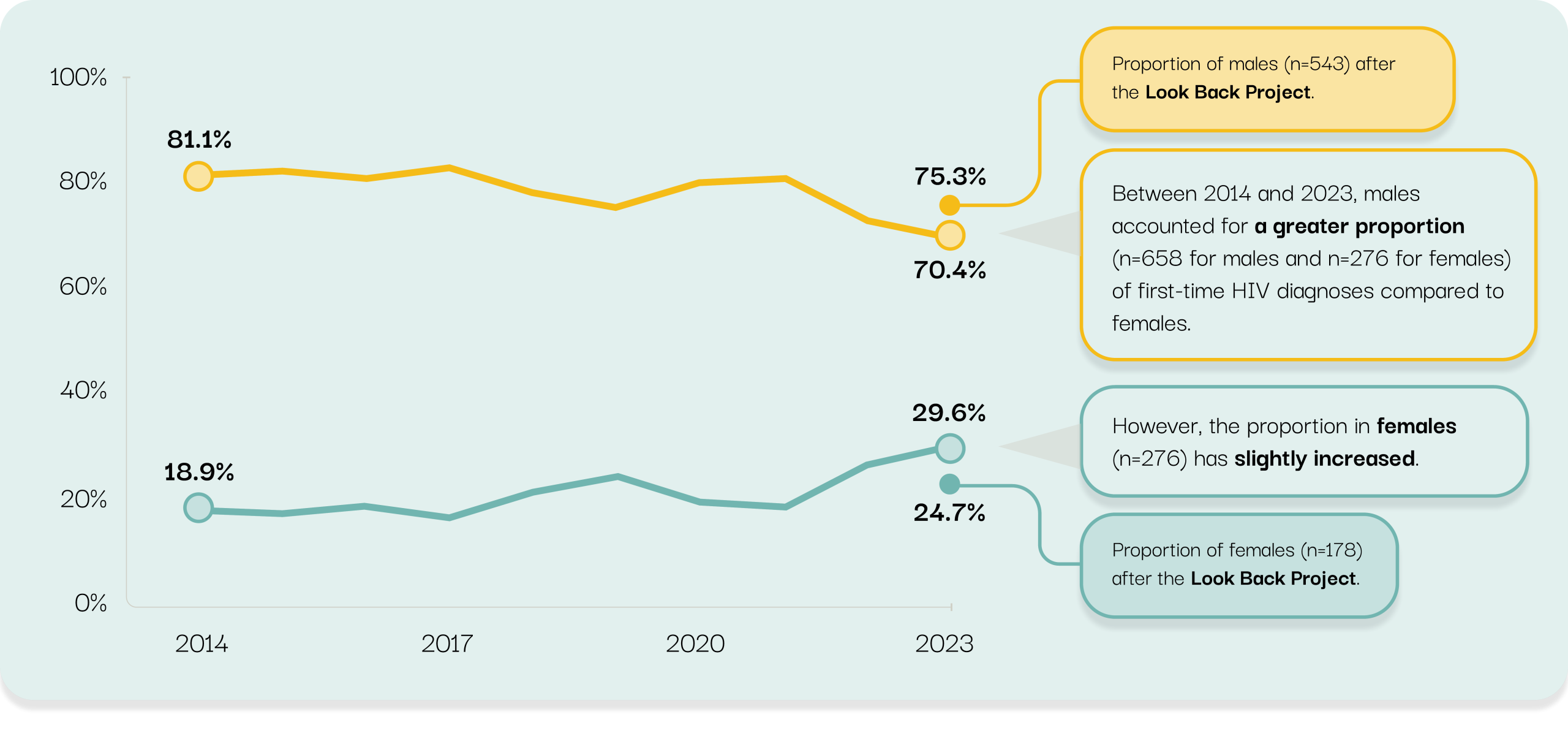
Toronto represents the highest proportion of first-time HIV diagnosis by health region, followed by Central East and Central West.
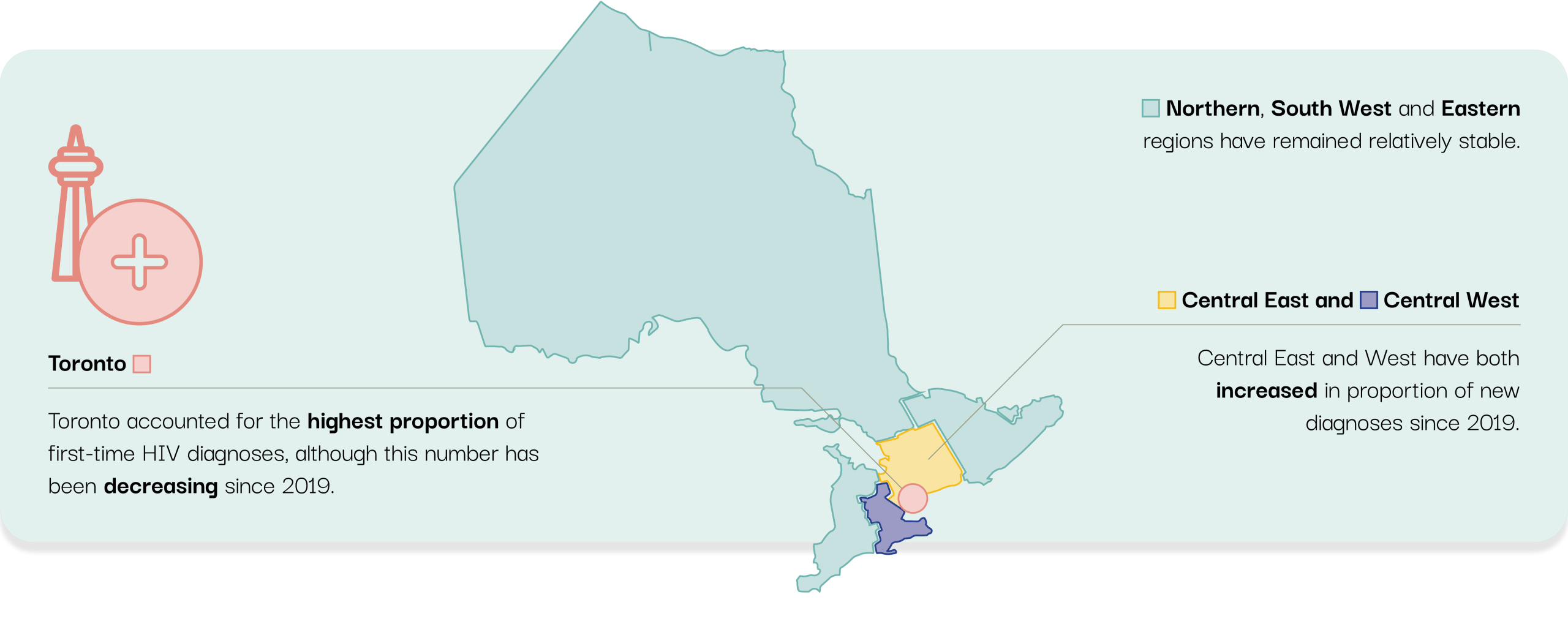
People who reported their race/ethnicity as Black accounted for the largest proportion of first time HIV diagnoses in Ontario followed by White, Latino/a/e/x and South Asian.
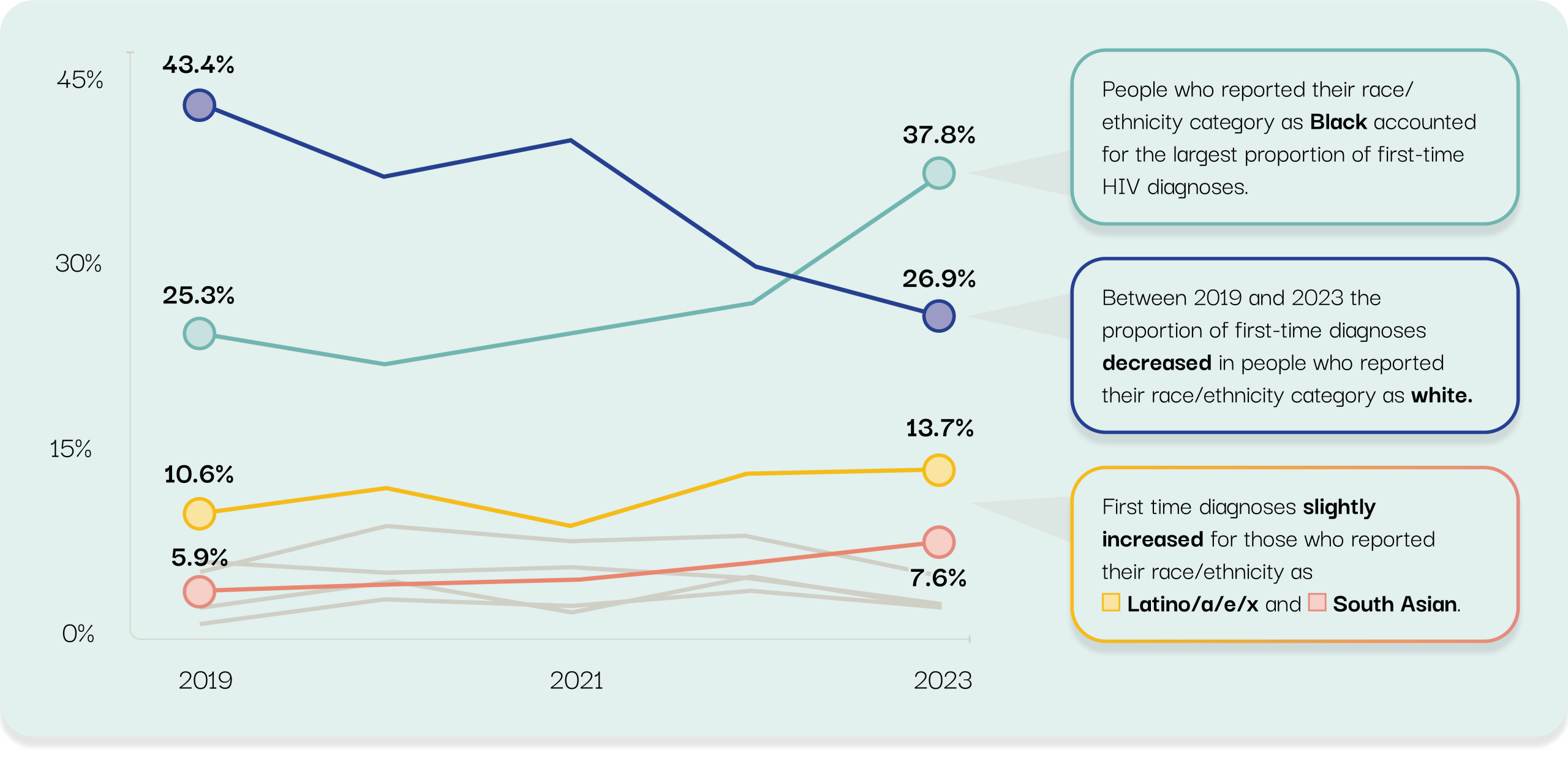
The proportion of first-time diagnoses reporting heterosexual exposure is increasing.
